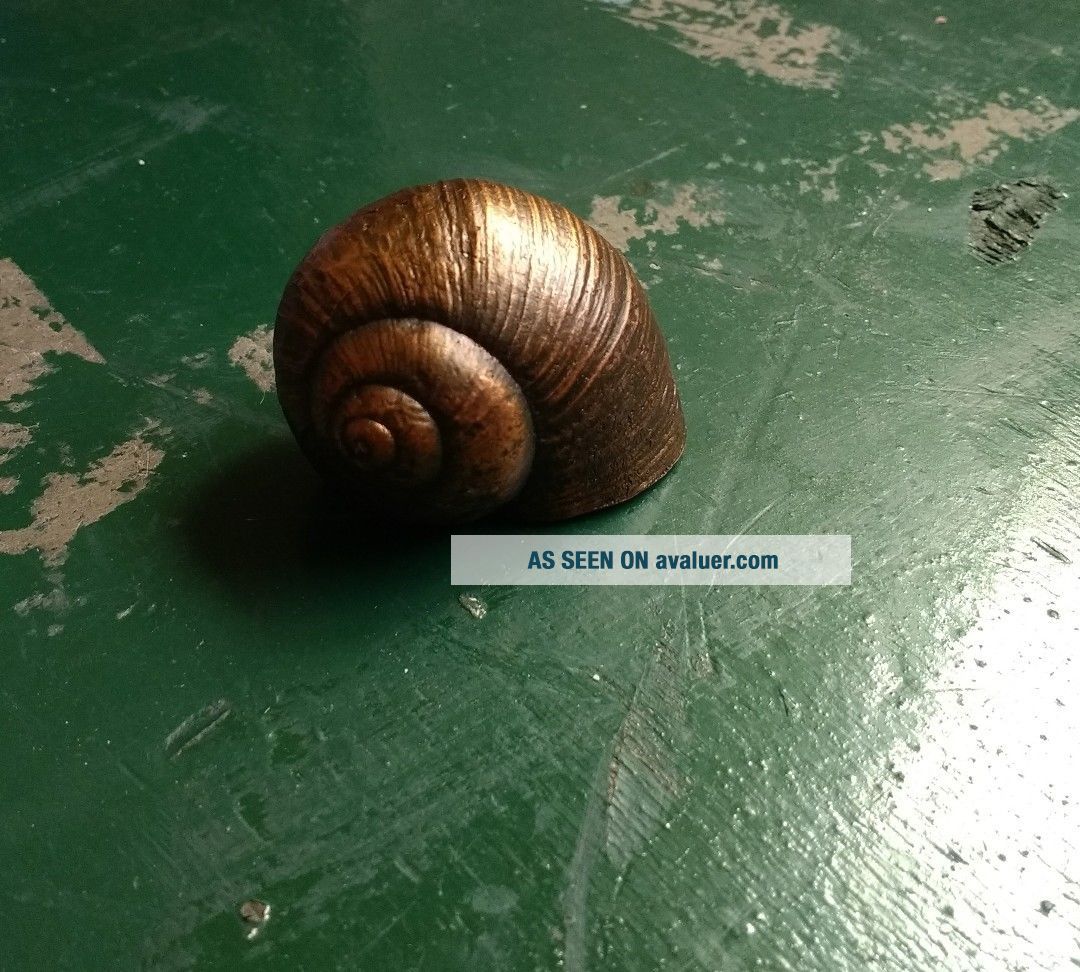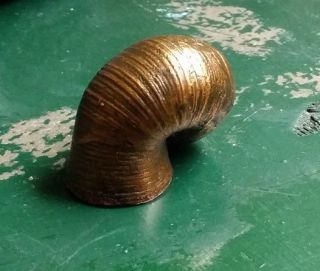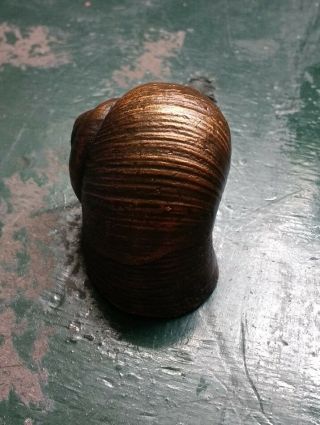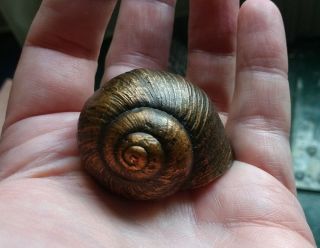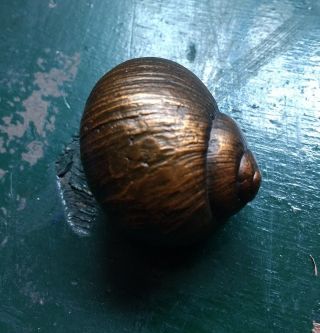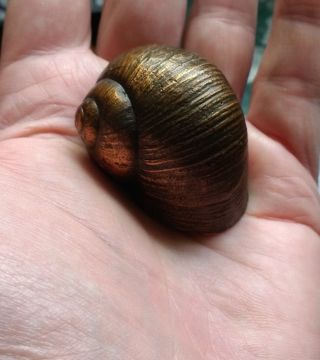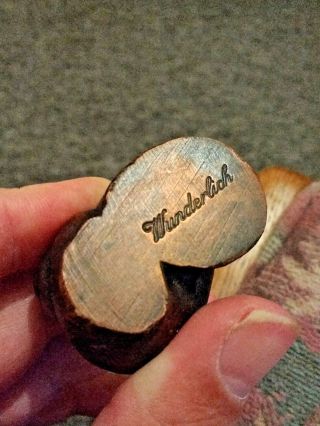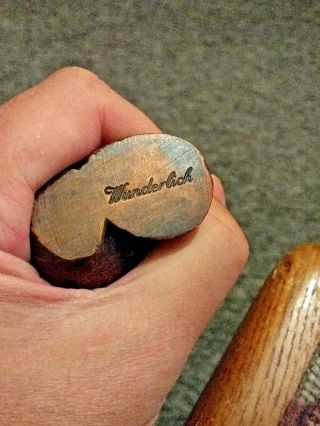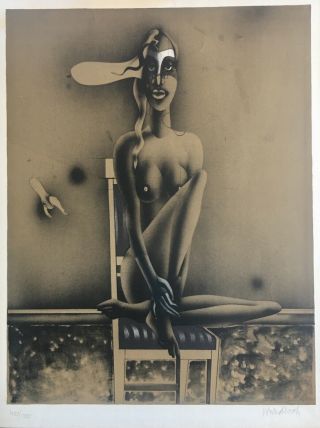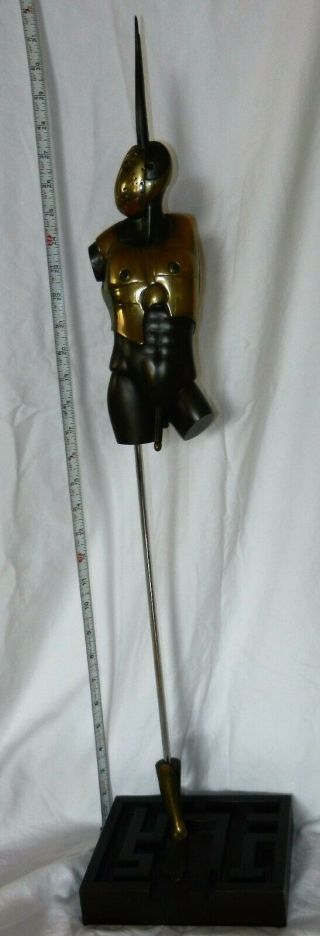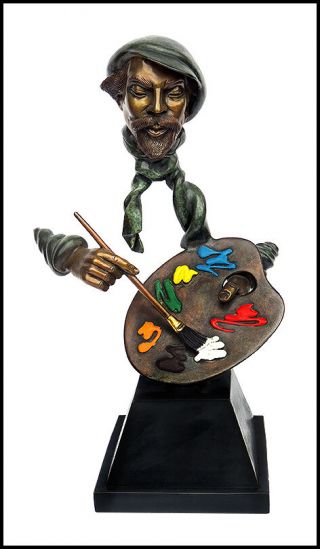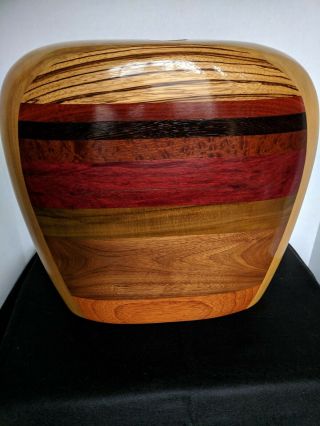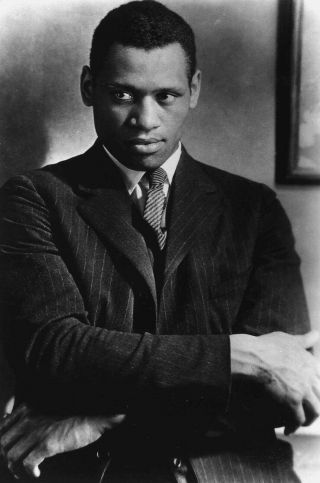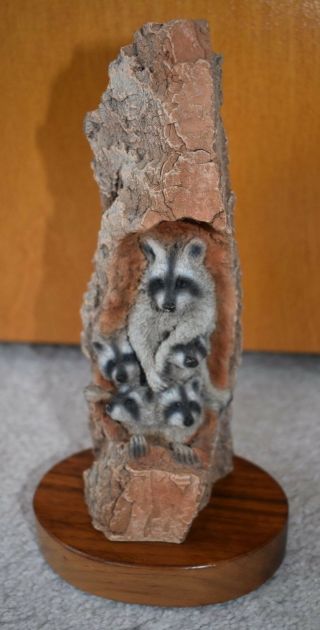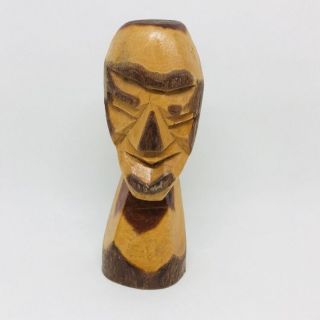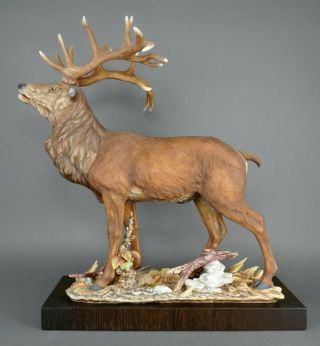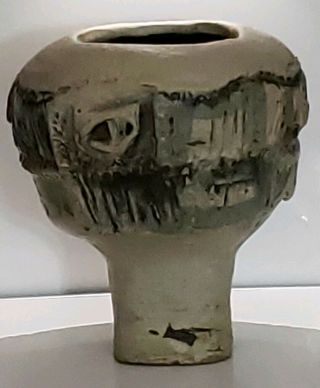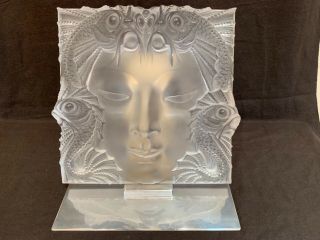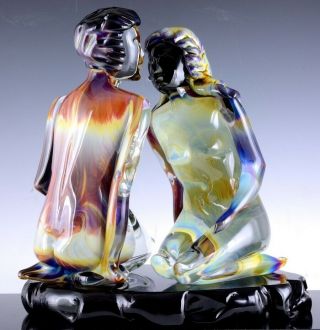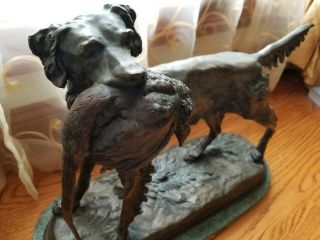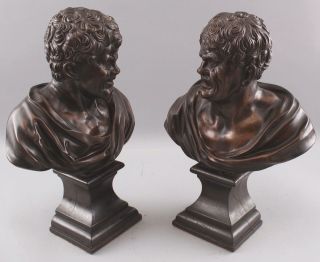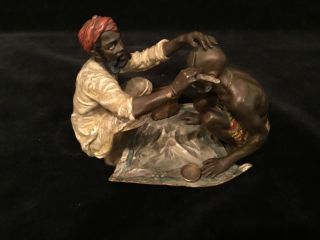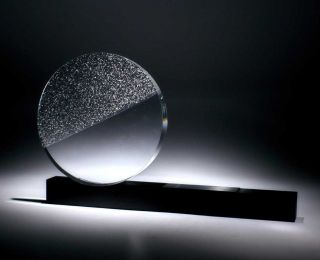Paul Wunderlich " Schneckenhaus“ (1976) Sculpture. Signed RARE
Item History & Price
| Reference Number: Avaluer:1217653 | Listed By: Dealer or Reseller |
| Features: Signed | Artist: Paul Wunderlich |
(1927 Eberswalde - Saint-Pierre-de-Vassols 2010)
Bronze with brown patina. (1973).
From an unlimited edition. With the chosen artist's name on the ground stand.
Spielmann 13.
Copper-plated metal alloy, patinated, partially polished. Cast in lost wax, height 3.4 cm, width 4.3 cm, depth 2.8 cm. Weight approx. 300g. With the artist's signature.
manufacturing:
The manufac...turing processes of casting are distinguished according to the patterning, the molding materials, the mold making and the casting method. In the latter case, casting is divided into two groups: the casts in lost form - here called the lost wax casting method - and the casts in permanent molds - such as e.g. the present metal casting.
In metal casting different alloys are used depending on the object. Similar to bronze casts, metal casts can be patinated after casting or coated with copper, brass, silver or gold in electroplating.
The sculpture was made using the lost wax technique (also called cire perdue, or a cera persa). In this century-old metal casting technique, a model of wax is made of the original form of the sculpture and clad with clay. When burning this clay-wax model, the waxy positive is "melted out" of the clay shell via thin tracheas - this has given the casting technique the name Lost Wax Casting. What remains behind within the clay shell is a cavity, which possesses the exact form of the sculpture to be produced. The cavity is now filled with molten bronze, taking care not to pour the liquid metal too fast or too slowly (with interruptions), otherwise air bubbles may be created, ruining the complete casting. Once the bronze has cooled, the clay is carefully smashed to get the raw casting inside. Thus, both the wax model (the positive) and the clay shell (the negative) are destroyed - which is why the process is sometimes called "lost-process". The raw cast is now reworked by hand: it is patinated, polished and waxed as needed and specified.
Both the production of the form as well as the actual casting and the post-processing of the sculpture are done by hand and require the highest craftsmanship and skill. The process is extremely inconvenient, because for each sculpture of the edition its own wax model must be produced.
Paul Wunderlich was a German artist best known for his Surrealist paintings and erotic sculpture, which secured his reputation as one of the most important members of the Magic Realist circle of artists. Wunderlich’s early representational subject matter included recent scenes of Germany’s oppressive history during World War II, but his imagery later turned towards Surrealist-influenced works, featuring sexual imagery and fantastic, floating forms. He was born on March 10, 1927 in Eberswalde, Germany and studied graphic art at the Landeskunstschule in Hamburg before becoming an art teacher there. During that time, he learned printmaking techniques from the well-known artists Emil Nolde and Oskar Kokoschka. Wunderlich also began painting using the free-form, Expressionist style of Tachism, but later abandoned it for more figurative imagery. In 1960, he moved to Paris and lived there for three years while working in the Deskjoberts workshop as a lithographer. From 1951 to 1960, he taught as a professor at the University of Fine Arts in Hamburg and from the 1970s on, his energies turned to sculpture. He lived between Hamburg and France before his death on June 6, 2010, in Provence, France.
Like no other artist of our time, Paul Wunderlich was one of the truly style-creating modern artists. In 1960, the Hamburg prosecutor's office still confiscated his works as "offensive". Three years later, the still young Paul Wunderlich is appointed professor at the College of Fine Arts. Numerous awards such as the Edwin Schaff Prize, honors at the Graphic Biennials in Ireland, Taiwan and Bulgaria have made Wunderlich internationally famous. He was the only German artist to be accepted into the Paris Académie des Beaux Arts, where Paul Wunderlich lived and worked alternately in Hamburg and France until his death in June 2010.
Born in 1927 in Eberswalde near Berlin, the painter and sculptor learned to draw at the art school in the Orangery of the Eutin Castle. Immediately after the war he went to the Hamburger Hochschule für Bildende Künste and studied graphics there. After completing his education, he stayed there as a drawing teacher and became professor in 1963.
At the beginning of the 1950s, he met Emil Nolde and Oskar Kokoschka and, under their guidance, printed reproductions of their works. He himself developed a very idiosyncratic style, in which Mannerist and surrealistic, but also elements of Art Nouveau and Art Deco meet. His subjects he first drew from German history, such as in the cycle "July 20, 1944". Later he became more interested in erotic and sexual motives, which he treated with delicacy and even a trace of morbidity. In 1960, such a graphics cycle was prosecuted for alleged immorality by the prosecutor.
In the 1960s he began to work on photographs by Karin Székessy. After giving up his professorship in 1968, he made several study trips to New York and Switzerland. Since then he has also been working on sculpturally aestheticized everyday objects that were in harmony with the subtly elaborated imagery of his painting.
"His works are recognized and appreciated all over the world, even by a broad audience, " writes Paul Wunderlich's biographer Jens Christian Jensen. "Art connoisseurs agree: Paul Wunderlich is the principal master of fantastic realism and one of the few style-creating artists of our time . "
"Of the commonplaces that are spread about his life's work has only one substance: The realization that Paul Wunderlich was the master of lithography after Picasso unsurpassed." (Prof. Heinz Spielmann)
"Looking for the greatest master in the mastery of lithographic technique in all its possibilities, no doubt: the laurel was due to Paul Wunderlich." (Carl Vogel)
Paul Wunderlich was born in Eberswalde, Mark Brandenburg, in 1927, and was probably best known for his erotic sculptures and Surrealist work. He also belonged to the second wave of Fantastic Realists (otherwise known as the Magic Realists). He took Free Graphics at the Landeskunstschule in Hamburg (1947-51), alongside Reinhard Drenkhahn and Horst Janssen. He then enroled in a class with Willem Grimm, the German painter and Printmaker. In 1951, he also became a teacher of lithography and etching at Landeskunstschule (a position that he held until 1960), whilst learning and printing under Oskar Kokoschka and Emil Nolde.
In 1955, Wunderlich was given a scholarship by the Cultural Committee of Germany. Two years later, he began to paint in a Tachiste style, but quickly abandoned this. From 1957-8 he taught himself lithography. He also created his first figurative works, initially depicting recent events in Germany, then featuring more erotic subject matter. This aroused moral indignation, and, in 1960, the public prosecutor of Hamburg confiscated a series of these salacious prints (qui s’explique). One of his most important works from this period was ‘Sebastian’, completed in 1959, in which an almost Klee-like figure emerges, emaciated and malformed, from its bright orange background, stuck through with arrows.
Moving to Paris in 1961, Wunderlich worked in the Desjobert workshop, where he improved his lithographical technique. In 1963 he met Karin Szekessy (who later became his wife) a photographer and photo journalist, whose nude pictures he sometimes used as inspiration for prints. In the same year, he returned to Hamburg to take up a position as a professor at the Hochschule für bildende Künste, which he held until his resignation in 1968. Wunderlich continued to work for printing houses outside Germany, however, and experimented with sculpture, and airbrush tools. He also perfected his work with gouache. In 1964 he was awarded the Japan Cultural Forum Award, in 1967, the Award Premio Marzotti, in 1970, the Gold Medal in Florence, in 1978, Gold Medals at the Grafik-Biennale in Taiwan and in Bulgaria, and, in 1986, the Kunstpreis des Landes Schleswig-Holstein.
In the 1970s, Wunderlich began to produce sculptures, and also took inspiration from artists such as Manet, Ingres, and Dürer, isolating the latter’s motifs and putting them to Surrealist use. In 1981 he was elected to the Académie des Beaux-Arts, Paris (Engraving).
Wunderlich split his time between Hamburg and France for the rest of his life, dying in Provence in 2010. He had major retrospectives at several Japanese museums from 1994-5. He left behind a body of work that shows strange, distorted human figures with backgrounds that appear to be dissolving. His lithographs are held in several prestigious collections, such as the British Museum, Bibliothèque Nationale (Paris), the V & A, and MoMA (New York).
Please look at my other items including rare modern and contemporary art and design pieces. Thank you.



